I’ve been contemplating the question – how does poetry deepen our practice?
I want to share with you something a friend said to me recently. She had been reading poetry mindfully and subsequently, when she did the bodyscan, she experienced her body in a very fresh and free way.
She, like most of us, had been experiencing her body as concrete, problematic and mechanical lot of the time. Now something opened up, because of the invitations in the poems, to experientially go beyond this narrow, contracted perception. The poems had been speaking to her on another, rather mysterious plane and this came to fruition in her practice.
What is this other plane? And what is going on here? I think the secret is expressed beautifully in the phrase ‘poem-light’ used by poet Jane Hirshfield. My understanding of what she means is that poetry uses a metaphorical language which we instinctually understand, before we’ve thought about it. This feels like a twilight place of knowing. It’s between the neon light of our obvious thinking and the darkness of unconsciousness. Rob Nairn, initiator of the Mindfulness Association, called this the ‘subliminal’ layer of mind. He would repeatedly remind us that the subliminal is where it’s at in terms of transformative potential!
If we can become aware of the subliminal, change can really happen. This is because the compulsions and impulses can be ‘caught’ here, before they become ingrained thinking. Rob also believed the subliminal is a place of great potential. If we can learn to hang out there, we can bear witness, not just to our limiting tendencies, but also to the freedom, openness and rich array of possibility, which lives within us. Poems help this to be possible because they speak to us like dreams. They nudge us into the right hemisphere and sometimes they speak more truly and directly than left brain word maps do. Perhaps they are closer to the lived territory than rational word constructions tend to be.
So how do you access the subliminal? And how do poems connect us to our potential through the subliminal?
A poem introduces imagery, feeling and impressions that swirl into our subliminal, bypassing the thinking mind. If we can learn to hover in the poem-light of the subliminal, we’ll be able to truly receive our response to the poem.
To do this we practice mindfulness! We become present, rest in the body as we experience it (not as we conceptualise it) and let our mind and senses be receptive. We attune ourselves to the subtle realm of the subliminal. Then we listen to the poem. We rest gently in awareness watching the ripples the poem makes within. Shifting sensations, feelings, impulses, felt-sense. We notice and continue to hover here.
Most of the time when we hear a poem our inner wisdom response is lost. Lost in our attempts to analyse it or in our too-fast skim across it. When we receive poetry into our mindfulness practice, we have a unique present moment recognition that comes from inside us, even if analytically we have no idea what the poem is about. You could try this out by yourself. In a moment, read the poem below and sit in mindful presence. Notice your responses on the subliminal level. You’ll discover all kinds of happenings! These happenings are usually a big soup of limiting and habitual tendencies, mixed up with possibility, flow and openness. Often, when it comes to poetry however, the happenings become a mirror of the poem. They express our own personal piece of the universal wisdom that the poem is expressing. The poem speaks and we resonate and reply within. We understand on this feeling level, because we already ‘know’ deep down. In this way bringing mindfulness and poetry together connects us with our inner wisdom and with universal wisdom, when we know how to let it.
Consider this small poem by Japanese hermit of the 12th century Saigyo, which says what I’m trying to say in a much more elegant, immediate and alive way:
Among deep mountains
the heart’s moon
shines pure
and I see within that mirror
the whole world enlightened.
The poem is a prism which casts rainbow light into your depths so that you can see, feel and know what’s there.


